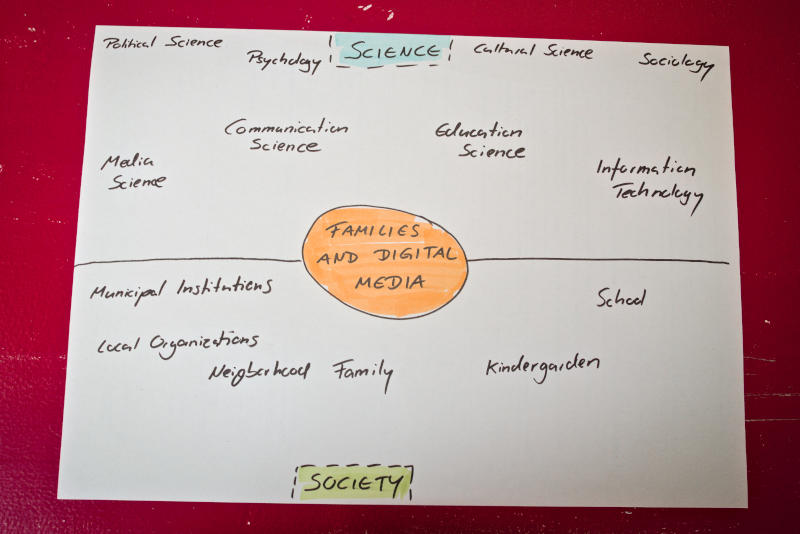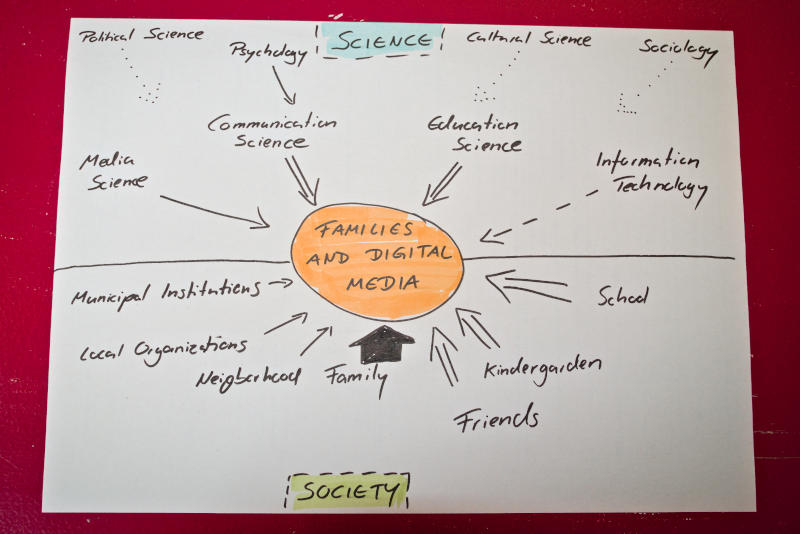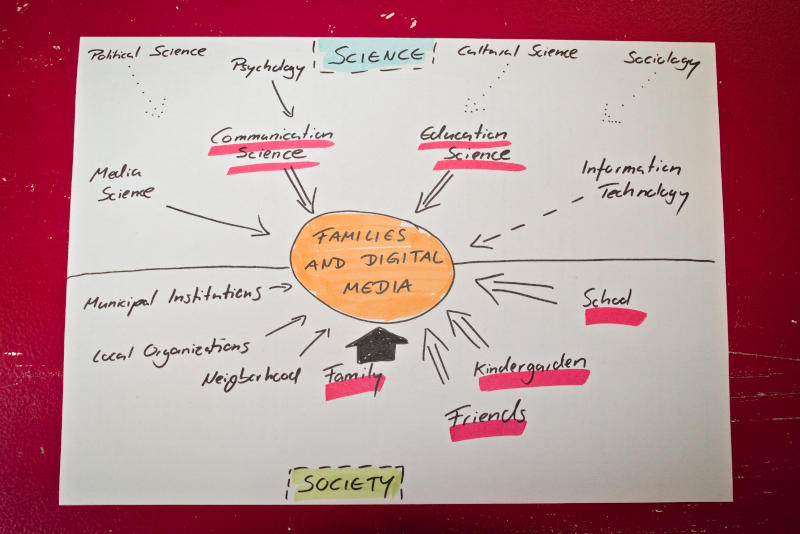Aims of the activity and description of target group
A map of their network helps participants to gain an overview of the parties involved in science and society and to analyze the extent of their influence on the topic. The activity is suitable for researchers and citizens in a group or individual learning setting. Activity 1.2 should be carried out beforehand.
Resources, Materials needed
Pen and Paper
Duration
45 - 60 minutes (depending on amount of participants)
Step 1 – Map Outline (5 minutes)
Start by drawing a central element in which you write the theme of your project. Draw a horizontal line that divides the paper into two halves. Write "Science" in the top half and "Society" in the bottom half. Use some color to highlight the elements.

Step 2 – Enter network nodes (10-15 minutes)
Write all important and related scientific disciplines in the top half. Bring the disciplines with a stronger influence closer to the topic bubble in the center. In the bottom half, repeat the same for all members and institutions of society that influence your topic.

Step 3 – Connect nodes with the topic (5 minutes)
Consider how strongly each network node influences the topic. Use different types of arrows to show which elements have a strong influence on the topic and which only have a minor influence.

Step 4 – Highlight the most important nodes (5 minutes)
Highlight the elements that have the greatest influence on the topic.

Learning Outcomes - which skills are addressed?
Participants receive an initial overview of the disciplines and people who could be involved in their project. Participants learn how to identify the key groups they need to involve in their project.
How do you check the outcomes are reached?
The participants identified the most important groups for their project.
De-Briefing questions
- Do you feel that you have a good overview of your network?
- Do you already have connections to all relevant groups?
Further links and readings
- Porter, A. & Rafols, I. (2009): Is science becoming more interdisciplinary? Measuring and mapping six research fields over time. https://www.researchgate.net/publication/220365243_Is_science_becoming_more_interdisciplinary_Measuring_and_mapping_six_research_fields_over_time#fullTextFileContent (last viewed 02/05/2024)
